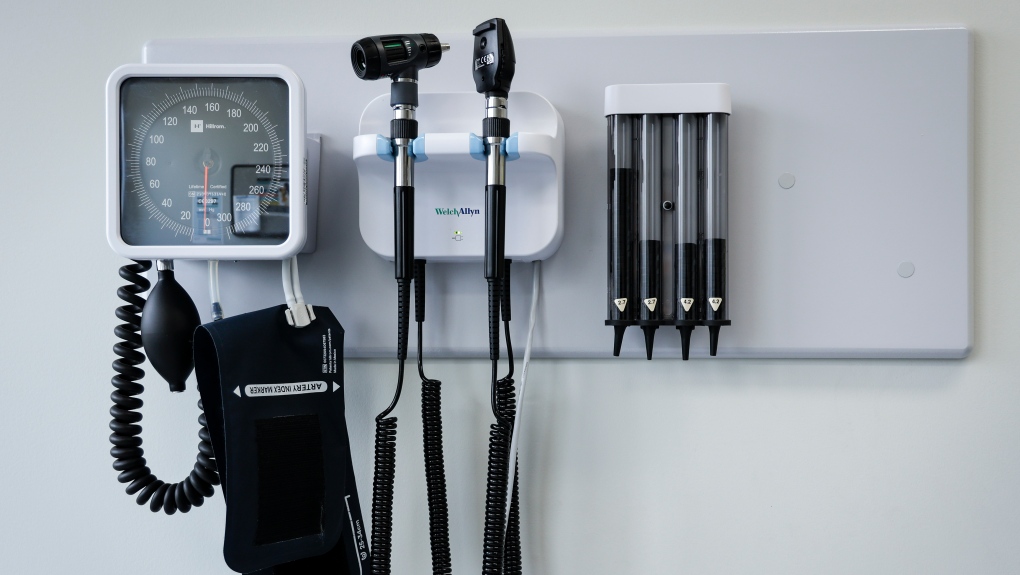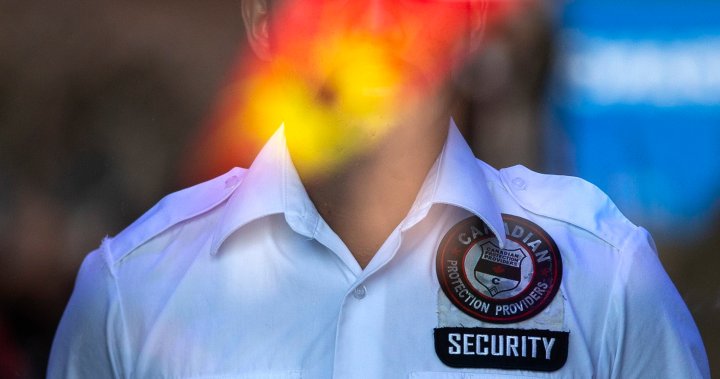Shortly after the start of the new school year last September, Pam Johnson started noticing soap dispensers were going missing from bathrooms at the New Westminster, B.C. high school where she teaches Grade 8.
The streak of vandalism was inspired by a viral trend on the social media app TikTok, and would have been shocking if it happened earlier in Johnson’s 16-year teaching career. Instead, it is just one example of many she gives about how social media has made her job — and her students’ lives — harder.
“It’s like Whack-A-Mole. Every day, it feels like there’s something new,” said Johnson.
“The increase we’ve seen in just overall troubling behaviour, it’s exhausting and it’s very, very concerning.”
Even before social media existed, teachers have had to address their students’ bad behaviour and the mental health challenges that come with growing up. But Johnson says as Facebook, Instagram, TikTok and other apps have become more central in students’ lives, those issues have risen dramatically.
“We see increased behaviour around self issues, self-harm, kids who are more inclined to be suicidal, who have relationship problems,” she said. “Kids have always fallen asleep in class, but they’re doing so a lot more now.”
“They’re so engrossed in their phones and what is happening there that they can’t concentrate on school, or even things that are just going on around them.”
To a certain degree, the damaging effect social media can have — particularly on young people — is nothing new. But in the decades since the introduction of MySpace and the eventual rise of Facebook and Instagram, there are clear indications it’s only getting worse. A recent deep dive into Facebook’s operations, by the Wall Street Journal, revealed the company is well aware of its platforms’ negative influences on the mental health of users — a sizable percentage of those being young ones.
Despite the negative effects coming into clearer focus, the entrenchment of social media in the day-to-day lives of Canadians is nearly inescapable. Global News is unravelling the many facets of influence these platforms have — both offline and on — and the impact on the classroom is just one piece of the puzzle.
Teachers and youth mental health advocates are quick to point out that social media use is not a direct cause of increased negative behaviours, which can also stem from other problems in kids’ lives. There is plenty of good to be found on these platforms, they add, and kids need to be taught the proper and healthy way to use them.
But they also agree that the negative aspects of social media — the addiction of seeking “likes,” the self-isolation it can promote — need to be addressed.
“For those kids who are struggling at home, maybe they have low self-esteem or other things like that – this medium is so difficult on them because they already feel disconnected,” said Johnson. “They already feel like they don’t fit in. And this just makes them feel more so.”
‘Urgent need’ for mental health supports
Johnson isn’t the only teacher who has seen the impacts of social media on their students.
Carl Hofbauer has spent the past five years as a student counsellor at a fine arts school in Langley, B.C., after over a decade of classroom teaching. He remembers sitting in on a music class this past year when he noticed just how much smartphones have invaded young people’s lives.
“(The students) were playing this Stravinsky piece — a pretty tough piece,” he remembers. “And one of the students, the oboe player, she had her phone on her music stand, and she’s scrolling through it … then she would play her part, and then go back to her phone.” Hofbauer notes the phone was next to the student’s sheet music.
“It just seemed so amazing to me, that in the middle of playing this beautiful music, some of these kids are still finding ways to disconnect.”
After transitioning to a position where he’s now intimately involved in students’ mental health struggles and anxieties, Hofbauer says it didn’t take long before he began feeling overwhelmed — not just by the issues he was confronting, but by how many students he was counselling at a time.
“I have 500 students in my caseload, and if 20 of them are dealing with issues at home or severe mental health struggles, you just can’t be proactive,” he said. “You’re putting out fires instead of actively counselling these kids, which is what they need.”
Carl Hofbauer, a counsellor at a Langley, B.C., fine arts school, in his office.
Jennifer Echols
Other teachers agree with Hofbauer that there is what Johnson calls an “urgent need” for more mental health resources in schools, including adding more counselling staff.
Emily Jayne, who teaches Grade 8 at a Vancouver private school but spent eight years prior teaching high school in the United States, says she’s seen in both countries how mental health has worsened — and how social media has played a role.
“It’s just this constant, consistent access to information that’s leading kids to become more concerned about climate change, more concerned about politics, how the world is changing,” she said. “It’s made their lives so much more stressful, and that has led to a change in how they behave for sure.”
Without those additional supports, Johnson says it’s often been left to teachers and other school staff to respond whenever those mental health struggles spill over.
“There have been fights, the police have been called on occasion … and often the dispute or the outburst can be linked to something on these apps,” Johnson said.
“It comes down on our shoulders a lot and we are stretched. And we just don’t know what to do anymore. So you just kind of start to shrug your shoulders and go, I don’t know. I don’t know.”
Data shows worsening crisis, but experts are divided
In their most recent annual student drug use and health survey in 2019, the Centre for Addiction and Mental Health (CAMH) in Ontario — where there are nearly as many K-12 students as Quebec, Alberta and B.C. combined — found “suicidal ideation and serious psychological distress” were at an all-time high for students.
Symptoms of anxiety or depression were also found to be on the rise steadily among students in Grades 7 to 12, with over one in five students reporting “serious psychological distress” — double the rate it was six years prior.
The researchers behind the study were explicit in explaining that screen time and social media usage weren’t the sole cause for these levels, but were among its main contributing factors.
Statistics Canada also found that youths aged 15 to 24 not only used social media more than older age groups, but also reported far higher negative outcomes from its use.
The researchers, which used the results of a 2018 survey of Canadians, found more younger users had reported experiencing “lost sleep, trouble concentrating on tasks or activities, less physical activity, feeling anxious or depressed, feeling envious of the lives of others, and feeling frustrated or angry” as a result of social media.
Yet some researchers — including Natasha Parent, a doctoral student at the University of British Columbia who specializes in the intersection of human development and technology — have refrained from pointing to social media use as being the determining factor in declining youth mental health.
“I don’t think that social media is that different from other things that we have seen in the past. You know, if this was 70 years ago, we’d be talking about TV, and there was so much fear mongering (back then) about how TV was going to melt kids’ brains,” Parent said.
Although Parent’s own research and work with kids has found a similar connection between depression and social media, she’s often found that those issues are driven by other factors — a bad home life, relationship problems — and social media can act as a coping mechanism.
Particularly during COVID-19, Parent says, “social media was actually a very important tool for teens and kids to connect with one another when they weren’t physically able to before.”
Teachers are aware that as social media’s reach grows, students are spending a majority of their social lives on these apps, making it harder to convince kids to tune out completely.
While teachers say it’s still worth exploring ways to limit or outright ban phone use during classroom time, they say that would only address part of the problem that teachers are facing.
“The amount of time spent fighting students to put their phones away, that’s a huge loss of time,” Jayne said. “We’re not able to focus on what we’re supposed to be doing because it’s up to us to police it.”
The fight for more mental health resources
Dr. Philip McRae, a researcher with the Alberta Teachers’ Association, says what’s most concerning is that mental health resources have seen a decline for the students and teachers that need them — particularly during COVID-19.
Among the issues, he says, are that there has been a general underfunding of resources from the provincial government that has led to a shortage of educational assistants and other support staff in schools. Even principals are being overworked, he added.
“We do see a great deal of anger (toward) this current government around not having the adequate resourcing and supports in schools,” he said.
In 2020, Alberta made deep cuts to its education system totalling nearly $1 billion and slashing thousands of support staff and educational assistants and redirecting it to the pandemic.

While other provinces like Quebec and Ontario have also seen cuts to their education or local school board budgets, governments have also begun to redirect existing funding towards mental health supports. British Columbia allocated over $20 million up until 2024, while Saskatchewan last month announced $400,000 towards ensuring “mental health first aid” training for one staff member at every K-12 school.
“We wouldn’t expect to send our children to school without somebody knowing first aid for a physical issue, so we shouldn’t expect that support not to be in schools for mental health,” said Saskatchewan Education Minister Dustin Duncan.
Duncan says he’s aware not only of the rise in kids’ social media use but also the impact it’s had on the classroom and youth mental health. Stories he has heard from parents whose children have been bullied through social media led him to not only think about ways to limit kids’ use, but also his own.
He says his 100-day break from social media helped spark the province’s Take a Break public awareness campaign, which was announced in December.
“I talk to school boards on a regular basis, and there isn’t a meeting where the mental health of our students doesn’t come up, and the demands are becoming greater for more supports for students,” he said.
“This is a way to remind those students that, if it’s once a week or once a month, it’s okay to take a break from social media once in a while.”
Paul Wozney, president of the Nova Scotia Teachers Union (NSTU), says governments still aren’t going far enough. He says not only do teachers lack the resources necessary to tackle in-school crises and online bullying, but there is also a lack of legislation and guidelines for teachers and staff in general.
Wozney warns it isn’t only students having to deal with the fallout from social media use, but also teachers now have added dimensions to their job — including a responsibility for them to teach kids proper online behaviour.
“Teachers’ workload is complicated by social media and the classroom because society expects teachers to be the primary educators of youth about appropriate online, virtual and social media behaviour,” he said.
“I think teachers feel very much like a lot of the other important figures in children’s lives aren’t taking the same kind of responsibility that is being laid on teachers.”
Teachers say companies need to change
For Johnson, more mental health supports will do little unless the social media companies themselves change their behaviours.
“What we need is these big tech companies to actually care about our youth and their future and not their massive profits, right? Because honestly, they target kids,” she said.
Pam Johnson, a teacher in New Westminster, B.C., in her office.
Pam Johnson
Facebook’s parent company Meta, which also owns Instagram, says its only incentive is to “try to give the maximum number of people as much of a positive experience as possible.” It also says it has spent more than $5 billion on improving safety and security this year alone.
The company also pushed back against the internal research highlighted by the Wall Street Journal’s recent reporting. While it admitted some teen Instagram users who struggled with anxiety and depression said the app made them feel worse, “more teens told us that Instagram made them feel better when experiencing these same issues.”
Last month, Instagram launched its own Take a Break feature that gives notifications reminding users to put their phone down after a certain amount of time. The platform will also allow parents and guardians to set their own time limits for their kids, while exploring other options to “keep (kids) safe.”
TikTok last year reinforced certain limits on video downloads and direct messaging for underage users, while push notifications are also paused during night hours for those users. The company, which has retained an outside safeguarding firm to conduct a review of the platform’s impacts on youth, also has a parental resource guide to foster family discussion.
A spokesperson reinforced the company’s position that “dangerous challenges and illegal behaviour” — like the removal of soap dispensers that Johnson witnessed — “are not allowed on our platform.”
Snapchat CEO Evan Spiegel said in October the company is exploring an in-house parental control system called the “Family Center.” The system will give parents “better insights to help protect their kids, in ways that don’t compromise their privacy or data security,” according to a company statement.

Parent, the UBC researcher, and other youth mental health experts say fostering parent-child relationships, while also encouraging more discussion in the classroom, is critical to improving teens’ social media use.
“So much of it is about the relationship” between parents and their kids, said Ashley Miller, a child psychiatrist at BC Children’s Hospital.
“Of course, all teenagers, as they get older, are going to have their private life because that’s completely normal. But the stronger the underlying parent-child relationship is, the less likely they are to engage in the harmful behaviours online or to (feel they) need to hide really serious things.”
Parent says teachers can play a role too by regularly adapting classroom policies on devices to fit the needs of their students.
“Maybe students will say at certain times of their lives, ‘Oh, I really want to have my phone on because my grandma is in the hospital and I want to know something happens,’ and then you can adjust the guideline,” she said. “Make it a living document rather than a hard rule.”
Johnson agrees that social media is not an absolute evil — “Hey, I learned how the play the ukulele on YouTube,” she laughs, “and a lot of our resources come from (social media)” — and she is always looking for new ways to integrate it into the classroom to keep students engaged.
But she’s seen enough over the years to know that something needs to change.
“The bottom line is our kids are hurting,” Johnson said. “They are hurting big time. When you have, you know, Grade 6s wanting to die, when you have kids who hate their lives and just feel worse and worse or more lonely because of this stuff … this is extremely worrisome.
“A lot of times people say, ‘Oh, the schools need to do more.’ We are, we are. We are. I can guarantee you that we are trying and trying, but this is not where it’s going to change. It has to change at the top.”
© 2022 Global News, a division of Corus Entertainment Inc.









More Stories
Giant prehistoric salmon had tusk-like spikes used for defence, building nests: study
Biden just signed a bill that could ban TikTok. His campaign plans to stay on the app anyway
How do U.S. decisions about TikTok impact Canada?